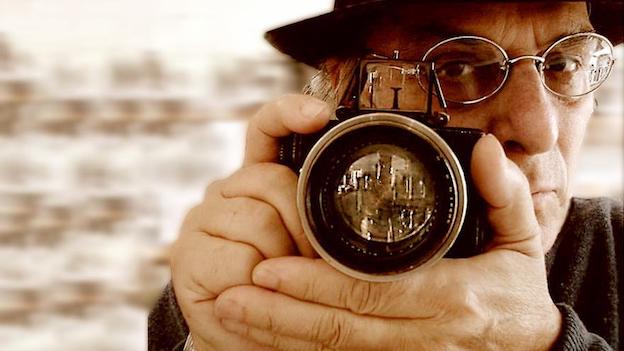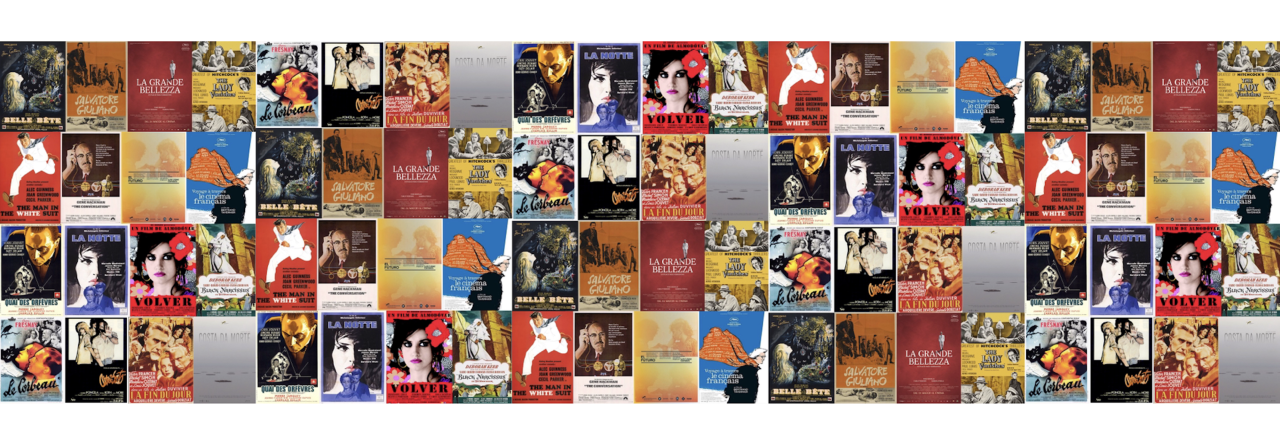
This piece was originally published on the old blog in April 2015; it was a culmination of my investigations into ‘el otro cine español’ thus far, and also a form of preparation for attending the D’A Festival later that month. An earlier post – this one – explains why I was looking at this particular set of films. When I first started this new blog, I wrote a post outlining where I was up to with my ‘otro cine español’ project but not much has happened since (although if you click on the ‘otro cine español’ tag at the foot of this post, you will be able to see other connected pieces). My trip to the D’A Festival in April 2015 mainly stemmed from a realisation that if I wanted to see these films (and their newer incarnations), then I would need to travel to festivals because it is difficult to cross paths with them otherwise. But I’ve had to accept that I don’t currently have the resources for festival trips, and have put the project to one side for the time being – although I keep an eye on the various Spanish online platforms that might host such films. For now, this piece and the one written specifically for this blog are a summation of the project.
I haven’t attempted to update the main part of the text (I haven’t stayed up to date with the saga of Spanish film finance, although I don’t expect that the situation has improved at all – if anything, it’s likely to have got worse) but I am rejigging the postscript because the availability status of several of the films has changed (so that info is current as of August 2017).
Un impulso colectivo
Marginal cinemas – or cinema being made on the margins, outside the norms of a given industrial context – are nearly always present, if not always widely visible. In the past few years in Spain, specific actions by the Rajoy government (for example, dismantling the existing film finance infrastructure without putting anything in its place, and in September 2012 raising the IVA [VAT] on entertainment (including cinema tickets) from 8% to 21%), in combination with the dire economic situation, have thrown film production in Spain into disarray and further undermined confidence in the Spanish film industry – an industry that was already habitually said to be in near-perpetual crisis. These circumstances have exacerbated the financial precariousness of those filmmakers already operating on the margins; the current reliance on self-funding and / or crowdfunding is not sustainable in the long term, and nor does it afford people a secure way of making a living. At the same time, the visibility of these films on the margins has increased because their success at film festivals abroad has raised their profiles at home. This international recognition is often presented by the press as a fillip for a beleaguered industry that these filmmakers nonetheless remain outside of.
From an outsider’s perspective (i.e. mine), there seem to be two events that crystallised the growing attention directed at goings-on on the margins: the September 2013 issue of Caimán Cuadernos de Cine, which was dedicated to ‘el otro cine español’ (the first time I had seen these films presented as being related to each other, despite their disparities), and the ‘Un impulso colectivo’ [A Collective Impulse] section (which takes its name from programmer Carlos Losilla’s Caimán article) at the D’A – Festival Internacional de Cinema D’Autor de Barcelona in April 2014. That’s not to say that these types of films weren’t being supported and championed elsewhere – many screened abroad and / or at festivals such as San Sebastián and Seville prior to these two events – but Caimán and the D’A Festival drew attention to the films and filmmakers as a group in a way that seems important to me because cinema is not created in a vacuum, and the idea of a group (however nebulous) foregrounds that these films are not isolated or unrelated occurrences.
A brief outline of each of the 14 films in ‘Un impulso colectivo’ can be found here. In this post I am going to consider the films as a group in order to highlight some areas of commonality across the programme.
Form follows content –
The ‘Un impulso colectivo’ programme offered a panorama of marginal cinema(s) in Spain, encompassing a range of financial models (including self-financing, crowdfunding, local grants and subsidies) and diverse genres and styles (a deadpan sci-fi, a musical-comedy, essay films, documentaries, and social dramas among them). The films collectively demonstrate that lack of money does not equate with a lack of ambition or signify a lower standard of visual or technical competence. For example, in El triste olor de la carne (dir. Cristóbal Arteaga) the use of one continuous take in conjunction with recurring diegetic sound (Mariano Rajoy’s 2013 national address plays on radios in cars and on the bus, making the architect of Spanish austerity almost omniscient within the narrative) reflects the way in which financial disaster pursues, and is closing in on, Alfredo (Alfredo Rodríguez); the visual and the aural are combined to position the viewer inescapably alongside Alfredo throughout his ordeal, and create an emotionally draining experience.
There are distinct forms and structures in operation across the programme. For example, Vidaextra (dir. Ramiro Ledo) and Une histoire seule (dir. Xurxo Chirro & Aguinaldo Fructuoso) create dialogues with other texts (Peter Weiss’s The Aesthetics of Resistance and the work of Jean-Luc Godard respectively) in order to expand on a worldview or explore the filmmakers’ own experiences. In other films, the actual process of telling a story becomes central to the form they take: in different ways, Uranes (dir. Chema García Ibarra), Árboles (dir. Colectivo Los Hijos [Javier Fernández Vázquez, Luis López Carrasco, Natalia Marín Sancho]), Ilusión (dir. Daniel Castro), Los primeros días (dir. Juan Rayos), and Sobre la marxa (dir. Jordi Morató) all make storytelling, or the play of artistic creation, part of their structure and exploration of broader themes. In Los primeros días, the rehearsals are interwoven with cast interviews and footage of later performances; we see the text take on new meaning for the children as they live the experience, but the juxtapositions in the structure also reinforce the theme of life’s transient nature. Filmmakers also utilise Spain’s past (in the form of Spanish colonialism and the Transition) to draw parallels and highlight connections with events in contemporary Spain in Árboles, Ilusión, and El Futuro (dir. Luis López Carrasco).
‘The crisis’ and human connections –
The economic crisis and its fallout is perhaps unsurprisingly the most persistent theme, and is manifested in various guises. Most straightforwardly, Edificio España (dir. Víctor Moreno) inadvertently captures the moments leading up to the construction bubble bursting and the subsequent sense of paralysis, while El triste olor de la carne takes up the economic theme on the level of personal devastation. In a more comedic mode, Ilusión shows economic circumstances impinging on the personal (pursuing an artistic dream) and the industrial (the film industry’s unwillingness to take a financial risk) in Daniel’s quixotic quest to make a musical about the political pacts that formed Spain’s democracy. The crisis also plays out via generational discontent, as seen in Las aventuras de Lily ojos de gato (dir. Yonay Boix) and Vidaextra where people in their late-twenties / early-thirties are stuck in a kind of arrested development, unable to fulfil the expectations of adulthood, at least in part because of social precarity and the impossibility of reliably supporting themselves. There is an undercurrent of frustration and anger – and in some cases the sad weariness of defeat – in many of the representations of contemporary social circumstances.
While several of the films – Uranes, Cenizas (dir. Carlos Balbuena), Sobre la marxa – focus on individuals in solitude (whether by preference or otherwise), the majority show informal communities held together by either friendship or shared experience. Several of these – for example, Edificio España and Paradiso (dir. Omar A. Razzak) – centre on a specific locations, and spaces in danger of desertion; the observed absences in those spaces serve to highlight the connections between those still present. But in the films where these communities represent support networks, there is an emphasis on physicality and the tactility of human interactions – whether the young immigrants playing football and larking about in Slimane (dir. José A. Alayón), the children throwing and dancing each other around the stage in Los primeros días, or the alcohol-induced flirtations and bonhomie in Las aventuras de Lily ojos de gato. Similarly, the conversation at the centre of Vidaextra explores the need for a sense of belonging, to feel part of something bigger than yourself, but also for the society you live in to in some way reflect your values and ideals. Most of the films in ‘Un impulso colectivo’ are rooted in a specific social context – with varying degrees of explicitness, they say something about Spain today – but in the parallels drawn between past and present, many of the filmmakers also suggest the possibility of (or more pointedly, the need for) change and a collective resistance to a continuation of the status quo.
I’ve only skimmed the surface, but taken together these films underline that the richness of cinema is to be found in its plurality; ‘Un impulso colectivo’ gave a taste of a multitude of styles and voices (although notably few women) standing together in the current ‘otro cine español’.
Availability
As far as I can tell, Árboles, Une histoire seule, and Vidaextra are not currently available in any format. Back in 2015 most of these films were tricky to access, so I’d like to repeat my thanks to the following people for allowing me access to their work: Luis López Carrasco (twice over), Xurxo Chirro, Ramiro Ledo, Víctor Moreno (for giving me access to Edificio España before the DVD was available), Juan Rayos, Lourdes Pérez at Producción El Viaje (and Jonay García at Digital 104 for passing that request along), and Deica audiovisual.
DVD: Edificio España, Ilusión (no subtitles), Paradiso, Sobre la marxa. [the links take you to the most straightforward way to buy them if you’re in the UK, but they may be available elsewhere as well]
Filmin: Cenizas, El Futuro, El triste olor de la carne, Los primeros días, Slimane, Sobre la marxa. [although Filmin can be viewed from anywhere, it will only allow you to purchase a subscription if you are in Spain – either do as I do (buy the subscription while visiting Spain), or find a friendly Spaniard to purchase on your behalf]
Márgenes: their VOD catalogue is currently down for maintenance, so I can’t link to specific films, but they have previously had Edificio España, El triste olor de la carne, and Slimane. When their catalogue is back up, I will look for links.
Vimeo: Las aventuras de Lily ojos de gato (no subtitles), Paradiso (with subtitles), Uranes (with subtitles).












